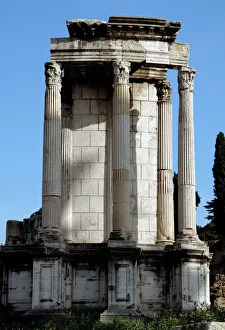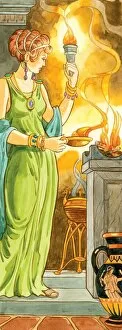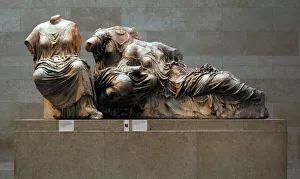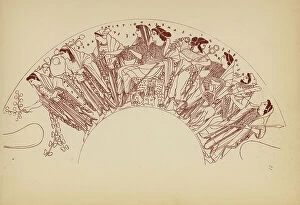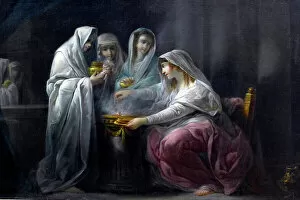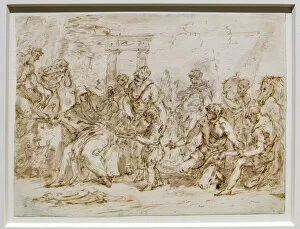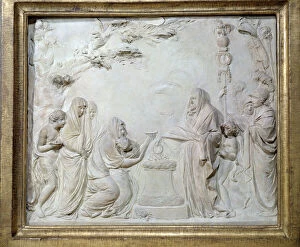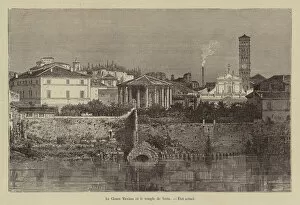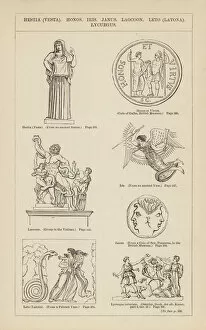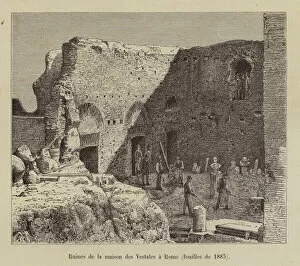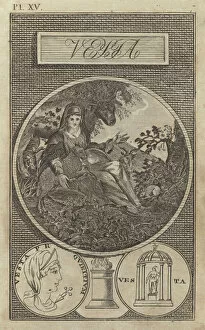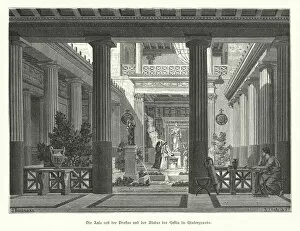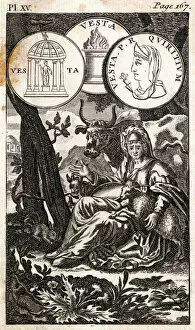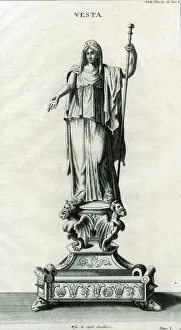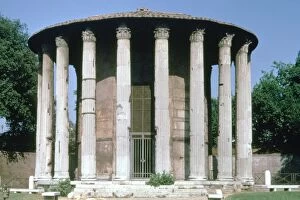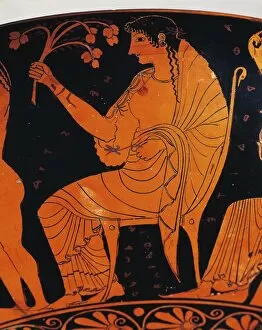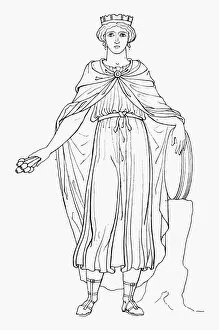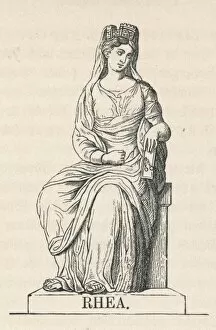Hestia Collection
Hestia, the goddess of the hearth and home, holds a significant place in Greek mythology as one of the 12 Olympian deities
For sale as Licensed Images
Choose your image, Select your licence and Download the media
Hestia, the goddess of the hearth and home, holds a significant place in Greek mythology as one of the 12 Olympian deities. In Rome, Italy, the Temple of Vesta stands as a testament to her importance. The East Pediment showcases three powerful goddesses - Hestia, Dione, and Aphrodite - symbolizing their divine presence. Artworks throughout history have captured Hestia's essence. "Les Vestales" portrays Vestal Virgins in intricate detail on canvas while "Sacrifice to Vesta" depicts a vibrant scene with pens and inks on paper. A bas relief terracotta piece titled "Consecration of a young Vestale" shows Minerva and Vesta overseeing an important ritual. The engraving "La Cloaca Maxima et le temple de Vesta" reveals the current state of ruins surrounding the temple, giving us glimpses into ancient Roman life. Another engraving features various gods alongside Hestia: Honos, Iris, Janus, Laocoon, Leto (Latona), Lycurgus. Archaeological discoveries also shed light on Hestia's significance. The excavation of the ruins at Maison des Vestales in Rome during 1883 provides insight into where these sacred women resided. An engraving showcasing Vesta herself emphasizes her role as an ancient Roman deity associated with hearth, home, and family. Lastly is an enchanting engraving depicting an open court within an Ancient Greek house; it captures Hestia's statue standing gracefully in the background—a reminder that she was revered not only by Romans but also by Greeks. From temples to engravings and excavations to artworks—each hint unravels another layer of Hestia's story—one that celebrates her eternal flame burning bright within our hearts and homes for centuries past and present.

